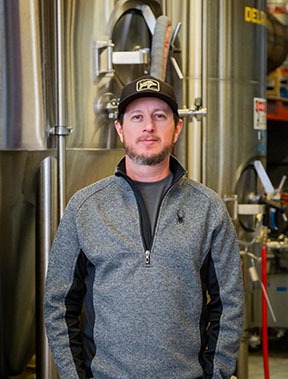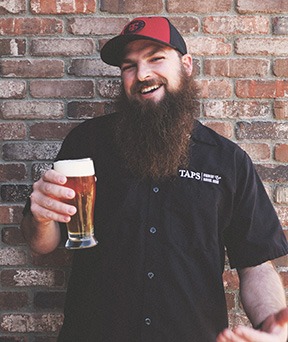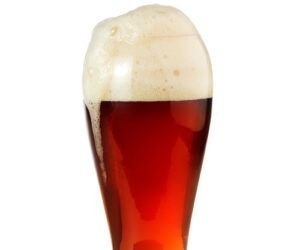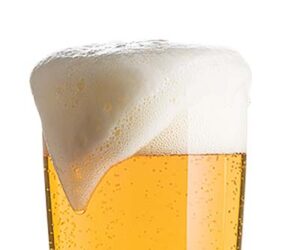Brewing Award-Winning Irish Red Ales
Irish red ale is a rather simplistic style to brew. It often only has one hop addition for the sake of bitterness, it doesn’t require any unique ingredients or brewing methods, and can be turned around pretty quickly. However, there’s a big difference between a beer that simply meets the requirements, and an Irish red ale that is an exemplary example of the style. To shine some light on what makes an Irish red special, we interviewed the three brewers who took home awards for their interpretations at the 2018 Great American Beer Festival (GABF). Just because a beer style is simpler to brew, doesn’t mean it has to be ordinary.
Marks Lanham is the Brewmaster at Comrade Brewing Co. in Denver, Colorado.

I try to stay fairly traditional for our Irish red ale, Redcon, regarding style guidelines, with the exception of using American ale yeast and the current hop choice of Simcoe®. This beer is supposed to have low bitterness and leave an almost candy-like sweetness on the palate, which is what we have captured.
We’ve made this beer with a lot of small tweaks to the malt bill, but I really like what we’re doing currently which is a base of American pale ale malt, about 6% light caramalt, 6% Simpsons Double Roasted Crystal malt (DRCTM), 6% Simpsons Imperial Malt, and 0.5–1% pale chocolate or black malt, depending on how dark you like it.
To achieve the sweetness and color that we are looking for we incorporate a decent percentage of crystal or caramalt, then we add the very small percentage of chocolate or black malt to make sure we get the nice red color instead of falling too far in the direction of amber. It’s all mashed in together in a single step infusion.
One of the areas we stray from tradition is with the use of Simcoe® hops, which, to be honest, the reason we use Simcoe® is because we have so much of it. This is not a hoppy style, so we use the hops to achieve a low IBU of 18 and add them with 70 minutes to go, so no Simcoe® character remains by the end of the boil.
When it comes time to ferment, ideally, you’d look for an ale yeast from the UK with only moderate attenuation, leaving some residual sugars in the finished product. In our case, we like the versatility of an American ale yeast for most of the beers we make, but it has a high attenuation. To combat this, we mash at a higher temperature (156 °F/69 °C) than other beers we make and use more crystal/caramalt than normal to keep the sweetness this style requires.
Redcon is a relatively easy beer for us to brew with only one small hop addition compared to some of the hop-driven beers we are know for. The hardest part is nailing that beautiful red color without being too amber/copper or going too far and ending up in the brown spectrum. At Comrade, Redcon stands out for its easy drinkability and lack of noticeable hop character. It turns out not everyone is into IPA.
The best advice for someone looking to brew an Irish red ale is to look at the style guidelines for the specs, then dial in the color and go easy on the hops. It helps to use authentic ingredients when it makes sense.
Bruce Dir (left) is the Wwner and Brewmaster of Tighthead Brewing Co. in Mundelein, Illinois

Scarlet>Fire (named after the Grateful Dead songs Scarlet Begonias and Fire on the Mountain, which are often played together and are a deadhead favorite) was the first batch of beer we brewed on the brewhouse when we started in September 2011. The recipe was one of Bruce’s that he had brewed and called many things over the years as a homebrewer depending on the event and party he was brewing it for (ranging from Missiles Red, Mustang Red, and Rick’s Retirement Red). It is a little bigger than a traditional Irish red and leans toward the drier, hoppier end of the spectrum, which is sort of the Tighthead trademark.
There are four different grains in the recipe, with each having a distinct purpose. The recipe consists of 85% base malt (a 50/50 split of 2-row and Maris Otter) to lay the foundation of a grainy/biscuity palate, 12% Briess caramel 60 °L that contributes color, sweetness, and caramel flavor/aroma, and 3% Briess roasted barley that adds color, roasty flavor/aroma, and enhances the perception of dryness. For hops, we rely on East Kent Golding to lend a subtle earthiness. The IBUs in Scarlet>Fire are slightly higher than a traditional Irish red, which helps accentuate the dry, roasty finish and a small late addition adds a touch of earthiness to the caramel and coffee notes.
When it comes to yeast for this style, what we are looking for is a clean strain with good attenuation. Our house yeast is a clean, well-attenuating American ale yeast that works great for Irish red. Fermenting in the low end of the temperature range will help produce a clean fermentation.
Beyond the ingredients, just practicing good brewing and packaging techniques to minimize dissolved oxygen in the can is the most important thing to making your Irish red stand out. We serve a cask-conditioned version at our taproom that really enhances the malt flavor and smoothness of the mouthfeel — which if you have the ability to do at home is a fun and tasty project you’ll find worth while with this style.
Kyle Manns is the Director of Brewing for TAPS Fish House & Brewery

TAPS Irish Red is an incredibly balanced, approachable, and smooth beer, and this is right in line with what one would should expect with the style.
Our Irish Red recipe is pretty simple. It gets its ruby red hue from a small addition of chocolate malts; caramel sweetness from the 60 °L crystal malts, and a toasty smooth finish from the Maris Otter base malt. We don’t use any American malt in this recipe, instead relying solely on English malts.
To achieve the beautiful color you expect with an Irish red ale we use a blend of chocolate malts, at just under 1% of the total grist. We have found this to give a rounder, smoother finish, over the sharper flavors from the
traditional addition of roasted barley. This is added to the whole grist, and mashed normally.
Malt is the start of this beer while hops and yeast play a lesser role. We use a single addition of a clean bittering hop for 15 IBUS. We aren’t looking for any hop character — just enough bitterness to balance out the sweetness and let the malt shine. Then we ferment our Irish Red with our neutral house ale strain, which keeps the beer clean and focused on the malt.
While an Irish red isn’t the most difficult style to brew, it is pretty easy to end up with a beer that isn’t very balanced if you get too heavy handed with ingredients. As a homebrewer, you need to know what each of your ingredients is bringing to the table and keep them in check.
The TAPS house flavor is often referred to as “clean,” and we feel this is a huge contributing factor that helps our Irish Red stand out. This is a style in which the malt needs to do the talking, and starting with the finest ingredients possible is key. We focus on the balance between sweetness, toast, and roast, and try not to have any one of those stand out any more than the other. This style tends to lean one of two ways: Too sweet, or too roasty, and we try to avoid both.


